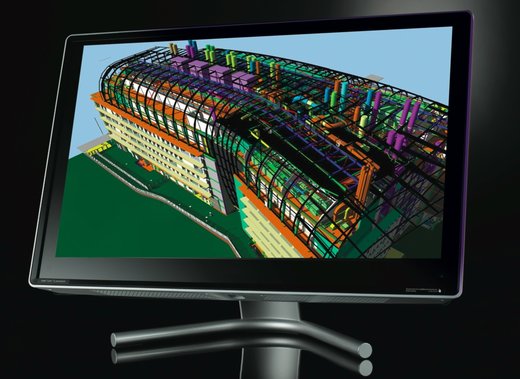Two years after UK government said all its projects must delivered with BIM by 2016, the industry gets a guide book. Chris Hallam takes a peek.
The already fervent Building Information Modelling (BIM) industry in the UK went into overdrive at the end of February when the Construction Industry Council launched its much-anticipated BIM Protocol.
The Protocol, freely available here, identifies the Building Information Models that members of a project team must produce, and identifies specific obligations, liabilities and associated limitations on the use of the models.
Coming two years after the UK government raised eyebrows by saying all centrally-procured government projects would have to use BIM by 2016, the protocol is a welcome attempt to show how the industry might actually do it, given existing technology and contracts.
BIM uses software to create a model of a building or asset that reacts to change in the way that the real building or asset would.
It’s designed to make an integrated and collaborative approach to construction possible, driving out much waste and duplicated effort, and raising the quality of the end product.
It could change the way the construction industry works, but it involves much more than simply using new software.
It requires a different way of thinking, a move away from the traditional workflow, with all parties sharing, and effectively working on, a common information pool.
This is a big shift from the more traditional silo approach where parties worked on separate information pools using several different (and usually incompatible) software packages.
A ‘protocol for the masses’
The point of the Protocol is to overcome inertia in the uptake of BIM, particularly the inertia of those outside the major infrastructure sector.
BIM adoption will suffer without industry standard frameworks that define responsibilities and risks. In that sense the CIC’s offering could be described as a ‘protocol for the masses’.
But, like anything designed for general application, users will have to scrutinise it to ensure it is in tune with the unique features of the relevant project.
The Protocol has been designed for use with Level 2 BIM, a sort of halfway house on the road to seamless digital integration of the parties.

BIM uses software to create a model of a building or asset that reacts to change in the way that the real building or asset would.
This may disappoint those further down the BIM road, but it’s what the government wanted for 2016 and it was seen as necessary to promote BIM throughout the industry.
Simon Rawlinson, Head of Strategic Research & Insight at EC Harris and member of the UK’s BIM Task Group, told us that Level 2 was a pragmatic choice.
He said it represents what can be delivered now with current technology, and it will work with existing contracts.
Plus, PI insurers are comfortable with their clients working at BIM Level 2.
Bilateral contracting preserved
The Protocol is intended to be used as a contract document, and to take precedence over other documents for all BIM-related provisions.
It will slot into exiting two-party contracting scenarios. It assumes the team of consultants is employer appointed.
Preserving traditional bilateral relationships is one part of why the Protocol, and Level 2 BIM, are only part of the way to “BIM Heaven”.
It means no direct contractual relationships are created between consultants on the same tier.
Working in BIM requires more horizontal co-operation and dependencies than the old ways of working, but industry consensus now is that for Level 2 BIM, current bilateral relationships are serviceable, if not ideal.
This means that parties will have to rely on their employer to enforce rights against those with whom there is no direct contractual relationship.
In that sense it is no different from the NEC Contract X12 Partnering Option, so the concept should not cause any undue concern.
No instant BIM
The Protocol is admirably crisp, weighing in at a mere eight clauses.
It’s well-placed to do what it has been designed for: provide a baseline protocol that promotes the general uptake of Level 2 BIM.
But much of the detail still requires the input of BIM-competent professionals.
The Protocol will help enable BIM use but it will not, of course, do anything without the parties’ commitment to work together to unlock BIM’s benefits.
Employers will need to carefully review it to ensure that using the Protocol will deliver on their intended project-specific BIM outcomes. Whilst it will have mass appeal, it is not a ‘one size fits all’.
Chris Hallam is a partner at international infrastructure law firm Pinsent Masons LLP. Follow on Twitter: @ChrisHallamLaw






